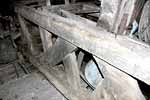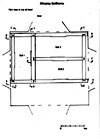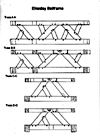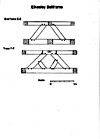For this church:    |
Elkesley St GilesBells
The bells at Elkesley are significant as they are one of only two examples in the county (the other being at Scarrington) that date entirely from before the Reformation. The three bells in the tower are dedicated to Gabriel, ‘Holy Mary’, and the ‘Holy Apostles’. The typeface on the inscription is the same as that noted at Scarrington suggesting a common origin at the same foundry. Coins have been inserted into the bells for turning purposes. These are thought to be groats dating from c.1390-1420 and there is evidence to suggest that the bells were cast in the mid-15th century. The founder is unknown. In addition to their age and dedication, the bells are significant in their musical scale which is set at an interval of 1.5 semitones making each exactly between a major and minor key. The first bell, ‘Gabriel’, weighs 4 cwt and is 26 ¼ inches in diameter. ‘Mary’ is heavier, with a total weight of 5 cwt and a 29 inch diameter. ‘All Saints’ is 6 cwt and has a diameter of 32 ¼ inches. The inscriptions in Latin are: 1) missi de celis habeao nomen gabrielis and can be translated as follows: 1) I have the name of Gabriel, who was sent from Heaven. In 1588 William Bolton was ordered to pay 10s. to the poor box 'for ringing the belles unorderly to the disturbance of the parish and for playing at the foteball' in the churchyard. Owing to the precarious state of the wooden frame supporting the bells they were no longer safe to be rung in 2016.
The bellframe is of oak, Elphick type W, Pickford Group 6.D. variant with the jack braces offset from the centres of the main cill to head braces and with the end gates having Elphick Z, Pickford Group 6.A trusses. The frame has been dated by dendrochronology and the timbers span the period AD 1628-1722, with at least eight of the timbers having been felled in AD 1726-46. The latter date is therefore taken as the date for construction. The report on the dendrochronological analysis of the bellframe timbers is available for download. | ||||||||










